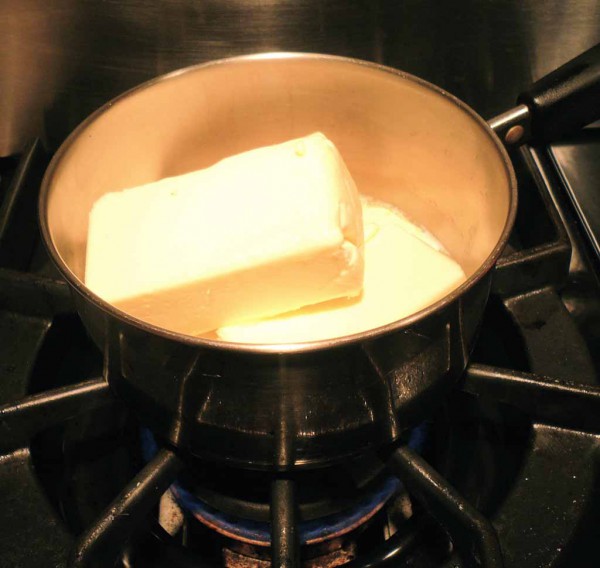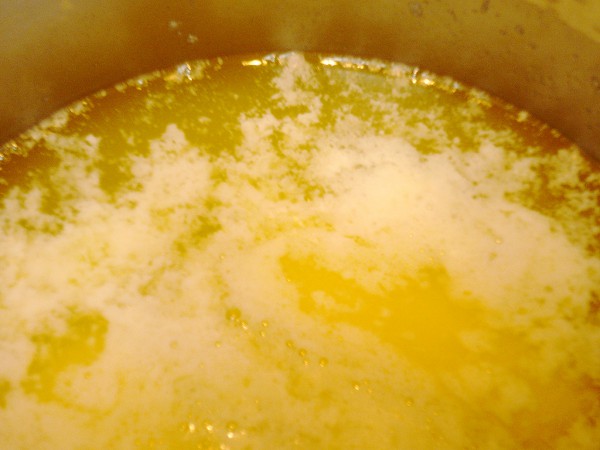Escoffier recipe for making roux brun, brown roux, at home (Escoffier, 13).
What is a roux? It’s a simple thickener, made with only two ingredients – butter and flour! Roux brun (“roo BROWN”), is made the same way as roux blanc and roux blond. The only difference is it’s cooked longer, until the flour turns a strong brown color. Its taste is described as very toasty or nutty.
Roux Brun, Brown Roux
Make some clarified butter, by melting the unsalted butter, skimming off its foam and saving the yellow butterfat.
Mix the clarified butter and flour together in a heavy pan and cook on low heat, whisking for about 30-35 minutes — or until the flour turns a strong brown color.
This dark roux may used to thicken up many types of gravies and heavy, darker sauces. When you cook the roux for this length of time, the clarified butter separates from the flour. Escoffier even suggests the butter may be saved for another use. I just stir it up to re-incorporate the oil a bit before using.
When mixing a roux into sauce, be careful to either a: mix cold roux into a hot sauce, or b: mix hot roux into a cold sauce. This activates the starch so it will thicken your sauce.
White roux and blond roux are made the exact same way, only cooked for shorter lengths of time. Here’s a shot of them side-by-side for comparison. From left to right: white, blond and brown roux.
Ingredients
225g clarified butter, unsalted
275g sifted, all-purpose flour
Equipment
Salter digital scale
Cutting board and kitchen knife
Heavy-bottomed pan or medium saucepan
Wire whisk
Plastic container
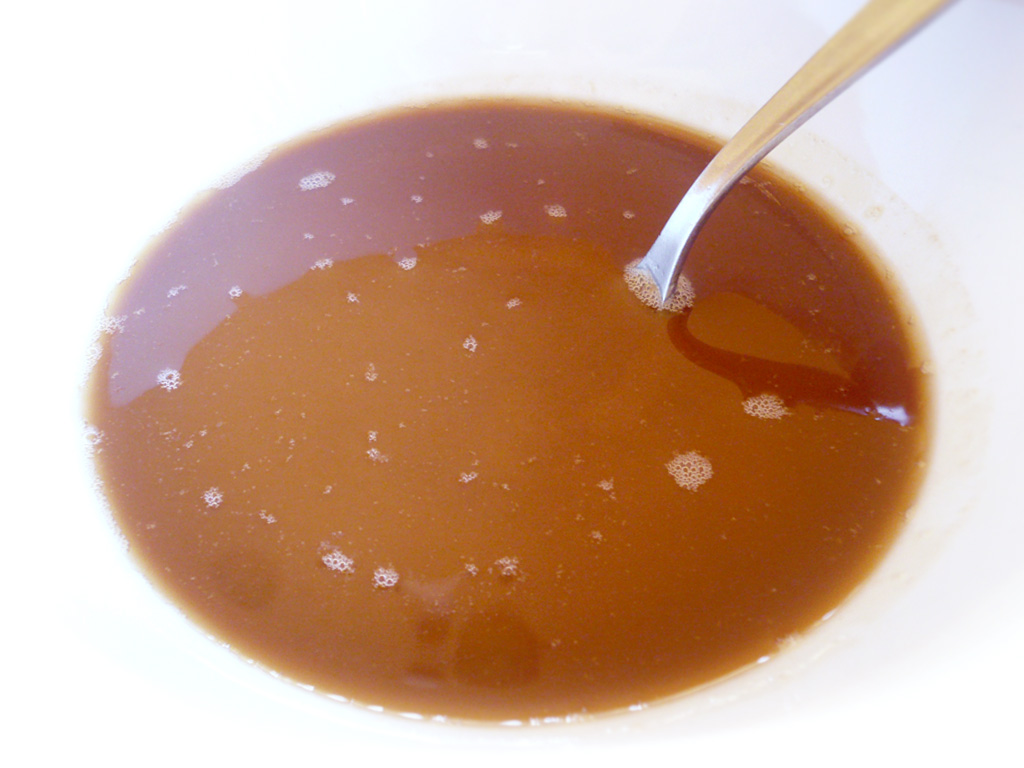
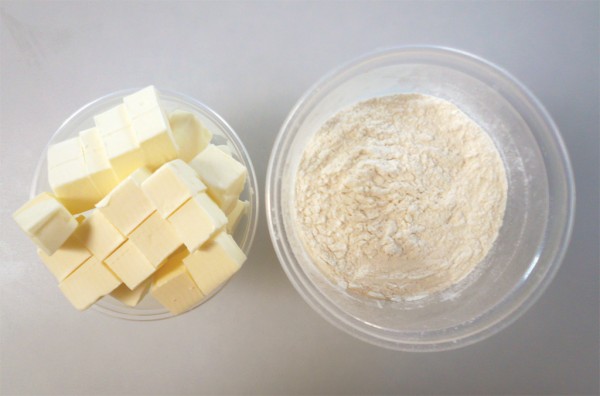
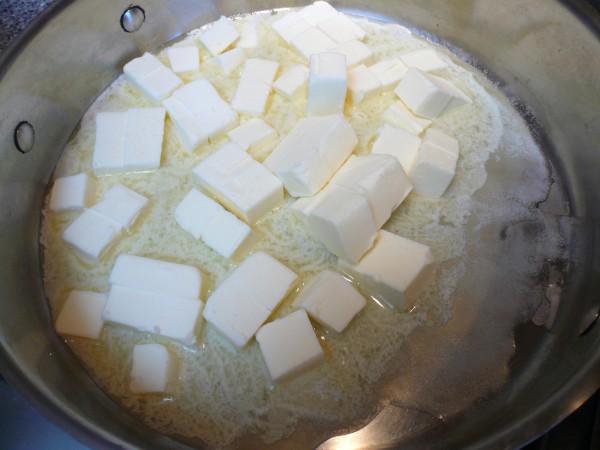
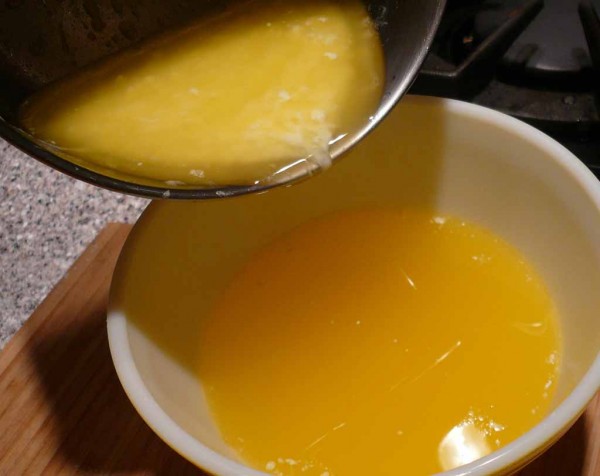

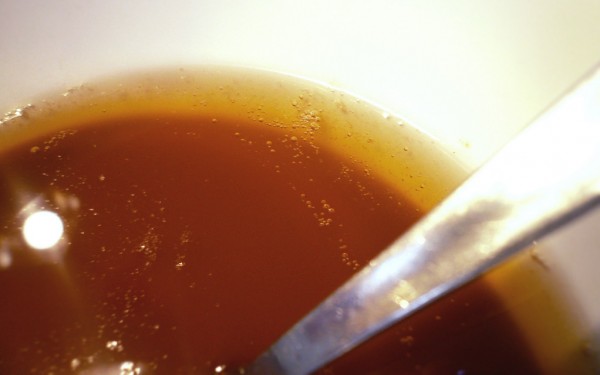
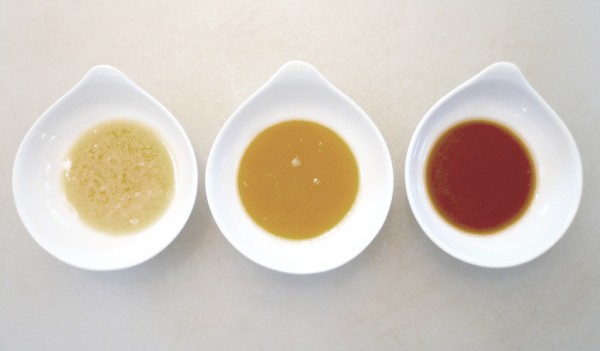


![0175. Beurre Clarifié, Clarified Butter [1907]](https://escoffierathome.com/wp-content/uploads/2012/11/04-Clarified-Butter.jpg)
